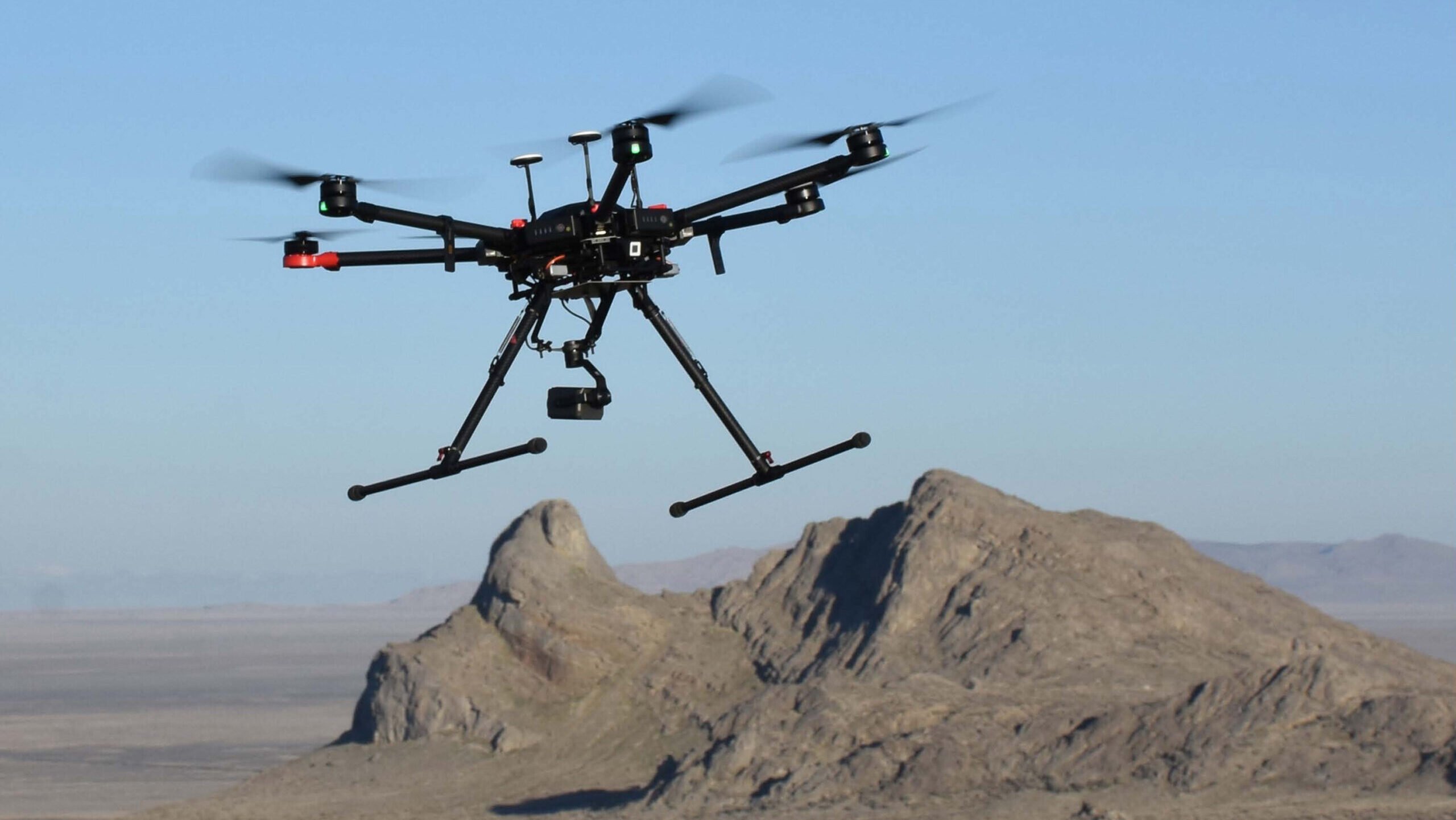
A small unmanned aircraft system (sUAS) is shown in flight at Dugway Proving Ground. (US Army Dugway Proving Ground photo.)
MODERN DAY MARINE 2024 — A Marine official tasked with the acquisition of small drones has a clear message for industry: He needs manufacturers to invest their internal resources to develop uncrewed systems at a lower cost and smaller size, but that wield the same capability as some of the larger systems currently on the market.
“What’s the future in your space?” Gregg Skinner, program manager for Navy and Marine Corps small tactical uncrewed aerial systems (UAS), asked a mixed audience of military and industry on Thursday at the Modern Day Marine conference in Washington. “Group 5 capability, in a Group 2 [drone], at a Group 1 price.”
The Pentagon classifies drones in a series of “groups” from 1 to 5 — 1 being the smallest and typically most inexpensive, such as a quadcopter, and 5 being the largest like an MQ-9 Reaper. Larger drones tend to have greater endurance and increased capacity for more sophisticated sensors and weapons.
“I seriously need you to get to work. And I need you to lean in and have conversations with us to continue to inform you of where it is that you need to spend your precious R&D money,” he told industry attendees directly, adding that those drones need to have secure comms as well. “If you’re not writing that down, you should write that down, because I need you to go to work and do that and deliver that capability.”
Speaking to Breaking Defense after his remarks, Skinner said he expected breakthroughs for his goals would come in “different stages,” but some of that technology has already arrived. As an example, he pointed to a system called ViDAR, developed by the Australian company Sentient Vision Systems — which recently announced it would be acquired by the American firm Shield AI — that successfully shrunk the technology, which he said can be mounted on a Group 2 drone as opposed to a Group 5. Shield AI later clarified to Breaking Defense that the ViDAR system is a wide area motion imagery (WAMI) sensor.
Other key innovations are on the horizon, like the miniaturization of batteries. “Battery technology is going to get better,” he said. “When that happens, it’ll be a chain reaction.”
Counter-Drone Efforts
On the other side of the convention hall, two Marine officers charged with drone defense responsibilities emphasized a different but related need: how to combat the rising threat drones pose.
Real-time lessons from Ukraine have demonstrated electronic warfare (EW) can be effective in defeating drones, though Lt. Col. Robert Barclay suggested officials have anticipated for years that the efficacy of EW may decrease as time goes on. As early as the 2017 to 2018 timeframe, he said, “we already started to identify that electronic effects on UAS were going to be minimal in the future. Not saying that we don’t need it, but the capability is changing.”
That’s because drones are increasingly able to leverage new techniques like terrain mapping to strike their targets, he explained — obviating the need for tools like GPS coordination that can be disrupted by jamming or spoofing. So far, however, expert analysis has cast doubt on the effectiveness of self-piloted drones that use tools like AI for guidance, at least when it comes to the Ukraine war.
“The threat is evolving in real time,” he said. “The whole Group 1 to Group 5 start to really get kind of nebulous as these [drones] are able to do things that traditionally they would not have been able to do.” Still, he emphasized some systems will need to be hardened against EW effects depending on the situation.
And like other officials who have emphasized no “silver bullets” exist to defeat drone threats, Barclay stressed a solution lies in layered defenses, ranging from missiles to EW and directed energy.
One key need Barclay identified is better coordination. When it comes to EW, the capability “is a very challenging thing to try to deconflict,” he said. The Marines are working with partners on how to do that, he added, pointing to potential dangers like a jammer impacting one’s own systems, including ones for emergency response.
In a similar vein, Barclay said the military services are struggling with how to identify whether a drone belongs to a friend or enemy, stating, “We haven’t quite figured that out.” He then pointed to the possibility of incorporating something like an Identification Friend or Foe (IFF) transponder, which aircraft traditionally carry to ensure a friendly missile doesn’t blast them out of the sky.
“We need to do something similar like that,” he said.
UPDATED 5/7/24 at 11:57 AM ET with clarification from Shield AI on the ViDAR system.






















